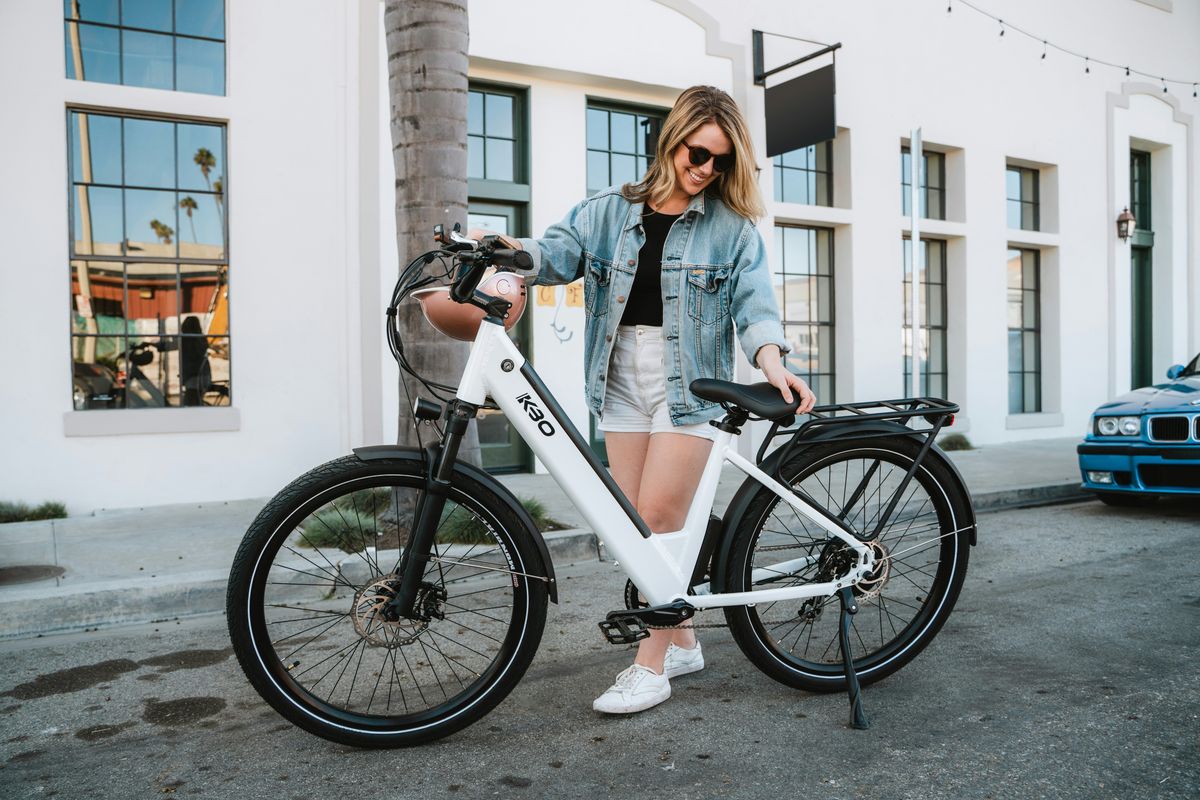34-year-old mom learns how to ride a bike for the first time alongside her 6-year-old daughter
"I discovered that we’re never too old, too late, or too far gone to try something new."

Mom learns how to ride a bike at 34 alongside her 6-year-old daughter.
Learning how to ride a bike is a huge milestone in childhood. Battling through the challenge of balance while pedaling and proper steering to find yourself cruising on a bike is an accomplishment to be celebrated. But not everyone can say they mastered bike riding young.
Instagrammer Sazan Hendrix (@sazan) opened up to her followers about her experience learning to ride a bike when she was 34 years old. The journey challenged her role as a mom, and how she pushed past her own ego about failure and embarrassment to accomplish her goal.
"One year ago, I learned how to ride a bike! Yup at 34, with my 6-year-old cheering me on (and teaching me, if we’re being honest ha)," she wrote in the post's caption. "I discovered that we’re never too old, too late, or too far gone to try something new. Consider this your sign. What is something you want to accomplish this year!? 🥳"
In the post, Hendrix shared that she had always been scared of riding a bike, but decided to conquer it when her six-year-old daughter Teeny decided she was ready how to learn. "Suddenly, I didn't want to just watch her do it. I wanted to go alongside her," she wrote.
So, she went for it. But it wasn't all sunshine and rainbows. She struggled to learn, and that brought up an internal battle. "But I was so in my head. Every fall made me feel like a failure. I couldn't master it. Week after week, I practiced. And week after week, I got nowhere," she shared.
She continues to explain how her hardship challenged her not to give up just for herself, but also for her daughter. "I felt defeated. Embarrassed. I was moments away from giving up. But I couldn't because she was watching. So I had to keep going," she wrote. "And in the process of learning, we both fell...together. Scraped knees. Bruised egos. Wobbly starts. But I think watching me try, fail and get back up again quietly told her, 'You can too.'"
The story didn't go the way she thought. While she struggled to master riding, her daughter Teeny got it. And her daughter became her biggest cheerleader. "'Mommy, just watch me and copy my footsteps!' So I did. That same day, the day she mastered it...I humbly did too," she explained. "We rode side by side, our wheels spinning in sync, like a moment heaven had written just for us."
Hendrix goes on to describe how parents are, most times, the ones doing the teaching when it comes to their kids. But not so in this case. "My daughter taught me. She reminded me: you're never too young or too old to try something new, face a fear, or keep pedaling after you fall."
On another slide, she shares that since then, she has shared so many biking adventures with her family. The experience made her a better mom. "Best of all I get to carry this story in my pocket. Holding onto it for the days when my kids reach a mountain that feels too big. I'll get to say: 'Remember when Mom learned how to ride a bike at 34?'" she wrote.
The experience also healed Hendrix's inner child who struggled to believe she could learn to ride and made it so that her daughter Teeny got to meet the little girl inside her. "So here's your sign. Go try the thing. Pick up the hobby. Do it scared. Laugh while you learn. You're not too late. You're right on time," she ended the post.
Her vulnerable post had a huge impact on her followers.
"😭😭😭😭 I'm crying. I'm 34 and I still don’t know how to ride a bike, never was taught though I had one growing up. This is inspiring," one wrote.
Another added, "Saz, not you making me cry with this wholesome story about Teeny giving your inner child permission to learn something new. 🥹😭"
And another shared, "What a beautiful core memory that you both will always remember. 😭😭😭"

